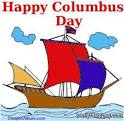
BATTLE OF PELELIU
NOTE: (Noah H. Belew, was a member of B Co., 1st Bn., 1st Reg., 1st Marine Division:) On September 15, 1944, U.S. Marines
fighting in World War II (1939-45) landed on Peleliu, one of the Palau Islands
of the western Pacific. Over the next several weeks, ferocious Japanese
resistance inflicted heavy casualties on U.S. troops before the Americans were
finally able to secure the island. Though the controversial attack on Peleliu
resulted in a higher death toll than any other amphibious assault in U.S.
military history, Allied commanders and troops learned important lessons that
would benefit them during the invasion of the Philippines and the Japanese home
islands.
On the morning of September 15, the 1st Marine Division landed on the
southwest corner of Peleliu. U.S. forces had refined their amphibious strategy
over a year of hard fighting, and by this time had it down to a science: Massive
naval bombardment of land-based targets preceded troop landings, which were
supported by strafing and bombing runs by carrier-based aircraft. The troops
arrived on shore in waves, gathering on an island's beaches until they had
sufficient numbers to push inland. These methods had worked in earlier landings
and were expected to work again on Peleliu.
Bloody Nose Ridge
The Japanese had learned from past attacks, however, and they took a new
strategy, aimed at bogging the enemy invaders down for days and inflicting
massive casualties in hopes of pushing the Allies into a negotiated peace.
Peleliu’s many caves, connected by networks of tunnels, allowed the Japanese to
hunker down and emerge mostly unscathed from the Allied bombardment. They held
out for four days before U.S. forces were even able to secure the southwest area
of Peleliu, including a key airstrip. When the Marines turned north to begin
their advance, they were targeted along the way by heavy artillery fire and a
fusillade of small arms from Japanese forces installed in caves dug into the
rocky surface of Umurbrogol Mountain, which the Marines dubbed "Bloody Nose
Ridge." Over the next eight days, U.S. troops sustained about 50 percent
casualties in some of the most vicious and costly fighting of the Pacific
campaign.
Meanwhile, the U.S. Army's 81st Infantry Division had secured Angaur and
Ulithi, also in the Palaus, relatively quickly. Members of the 321st Regiment
(and later the 323rd) were sent to aid the 1st Marine Division, arriving in time
to make a renewed attack on Bloody Nose Ridge from the west on September 24.
While the combined Army and Marine forces were able to envelop Japanese
positions on the mountain, the Japanese still held out, and would only be
dislodged after much bloodshed throughout October. More U.S. reinforcements
arrived, and the ridge was finally neutralized on November 25.
Characteristically, the Japanese defenders refused to surrender, and virtually
all of them were killed.
Lessons of Peleliu
The Battle of Peleliu resulted in the highest casualty rate of any amphibious
assault in American military history: Of the approximately 28,000 Marines and
infantry troops involved, a full 40 percent of the Marines and soldiers that
fought for the island died or were wounded, for a total of some 9,800 men (1,800
killed in action and 8,000 wounded). The high cost of the battle was later
attributed to several factors, including typical Allied overconfidence in the
efficacy of the pre-landing naval bombardment, a poor understanding of Peleliu’s
unique terrain, and overconfidence on the part of Marine commanders, who refused
to admit their need for support earlier on at Bloody Nose Ridge.
On the other hand, the capture of Peleliu served as a means to MacArthur's
much-desired end: the recapture of the Philippines, and the drive towards
Japan's home islands. The lessons learned at Peleliu also gave U.S. commanders
and forces insight into the new Japanese strategy of attrition, which they would
use to their advantage in later struggles at Iwo Jima and
Okinawa.





